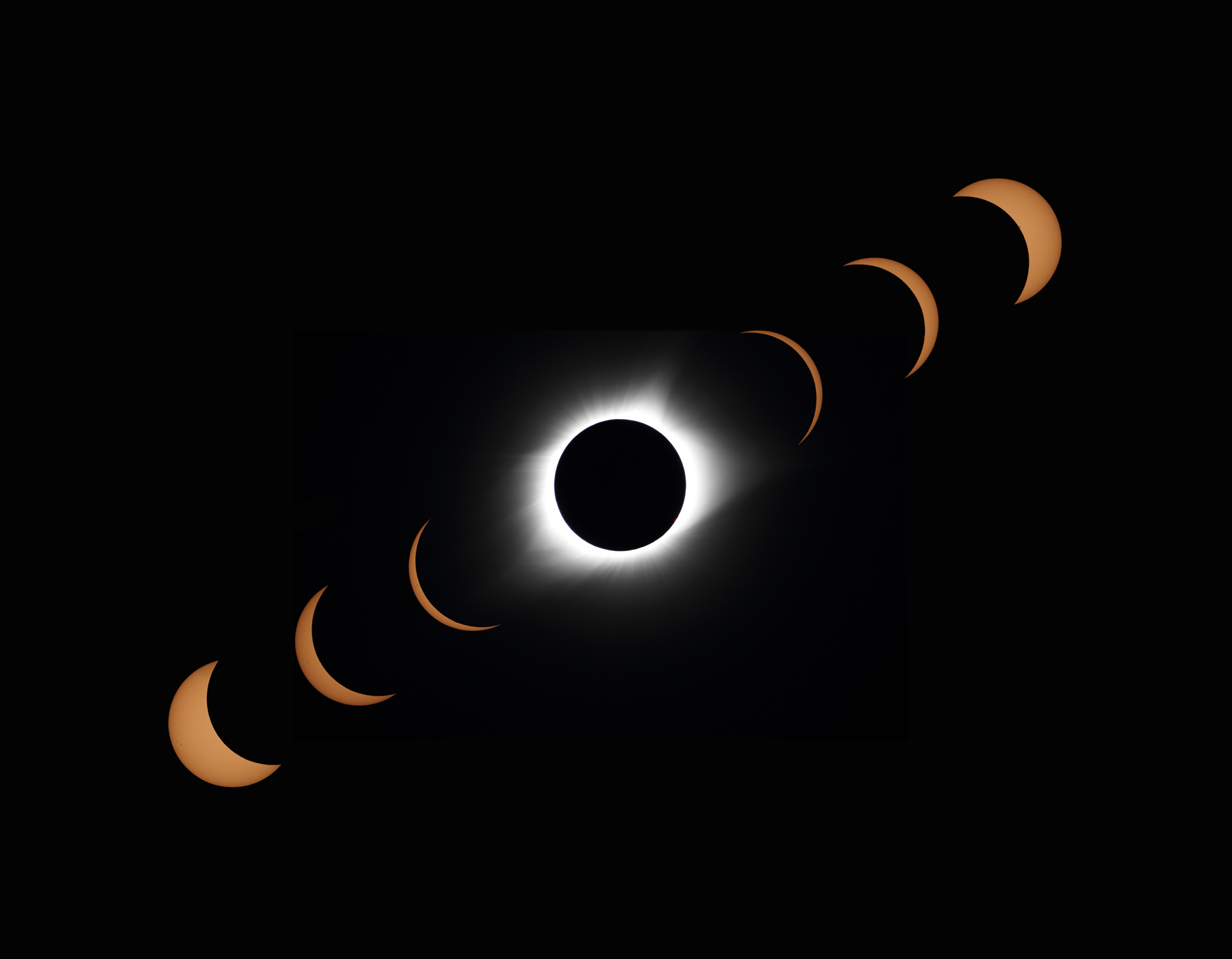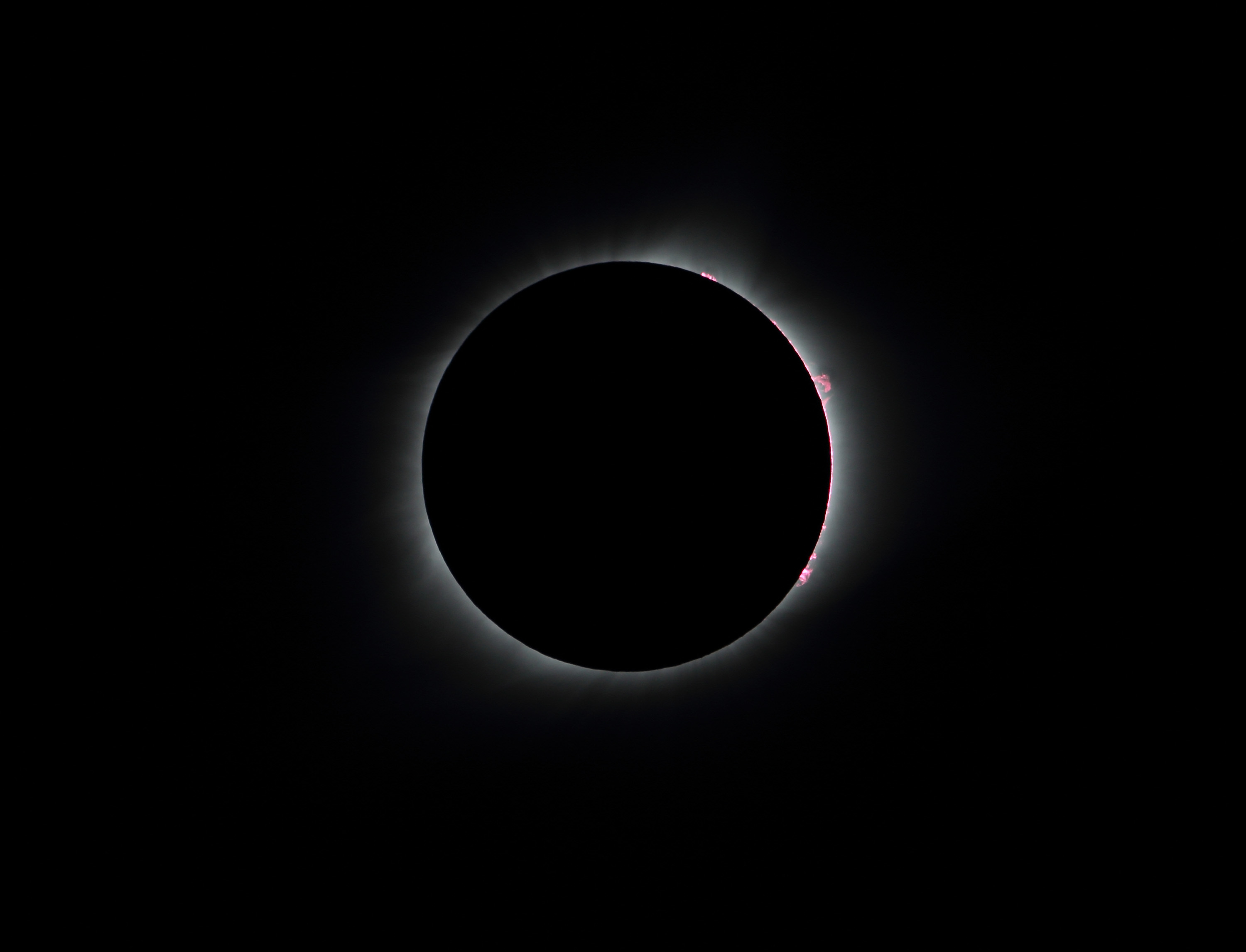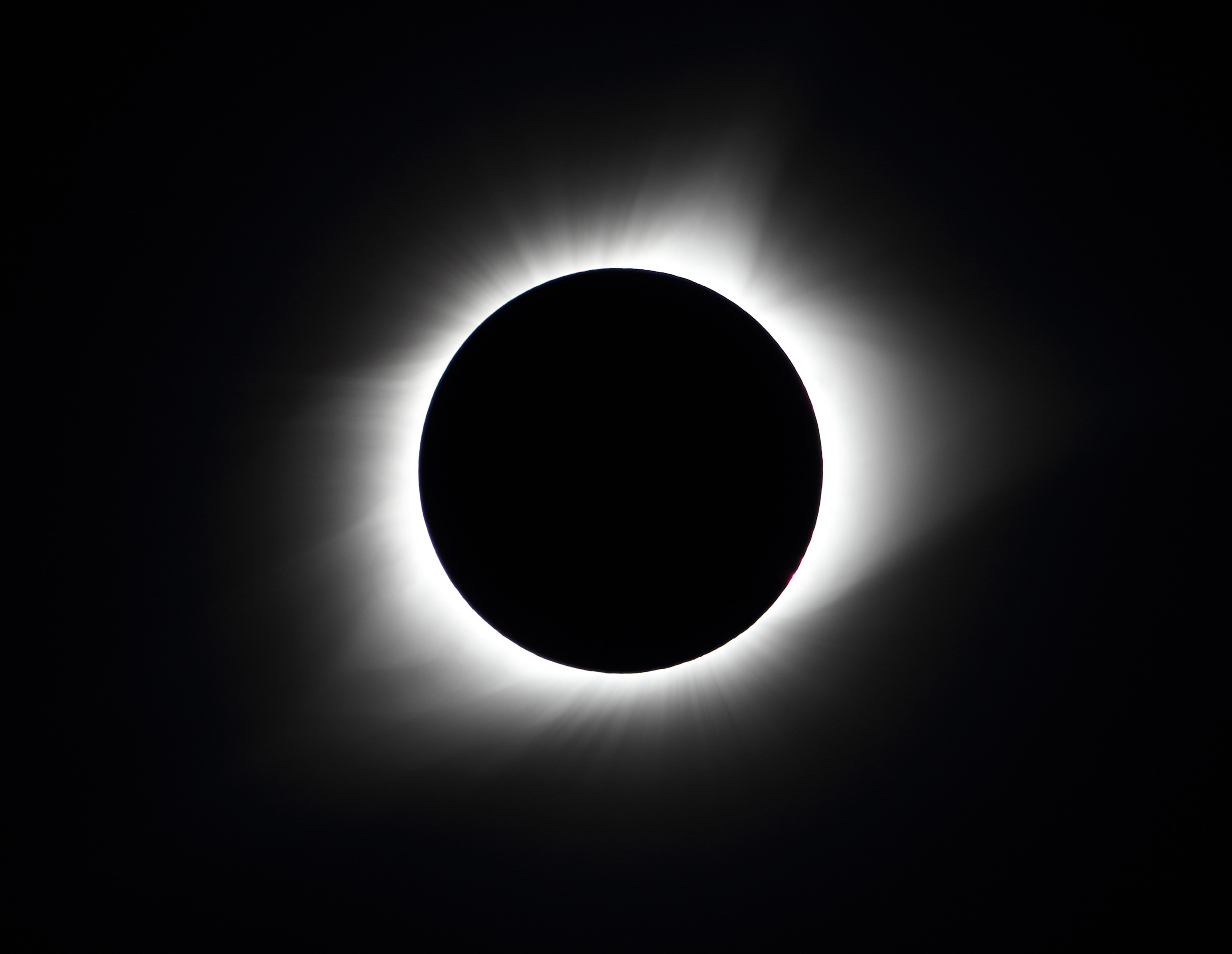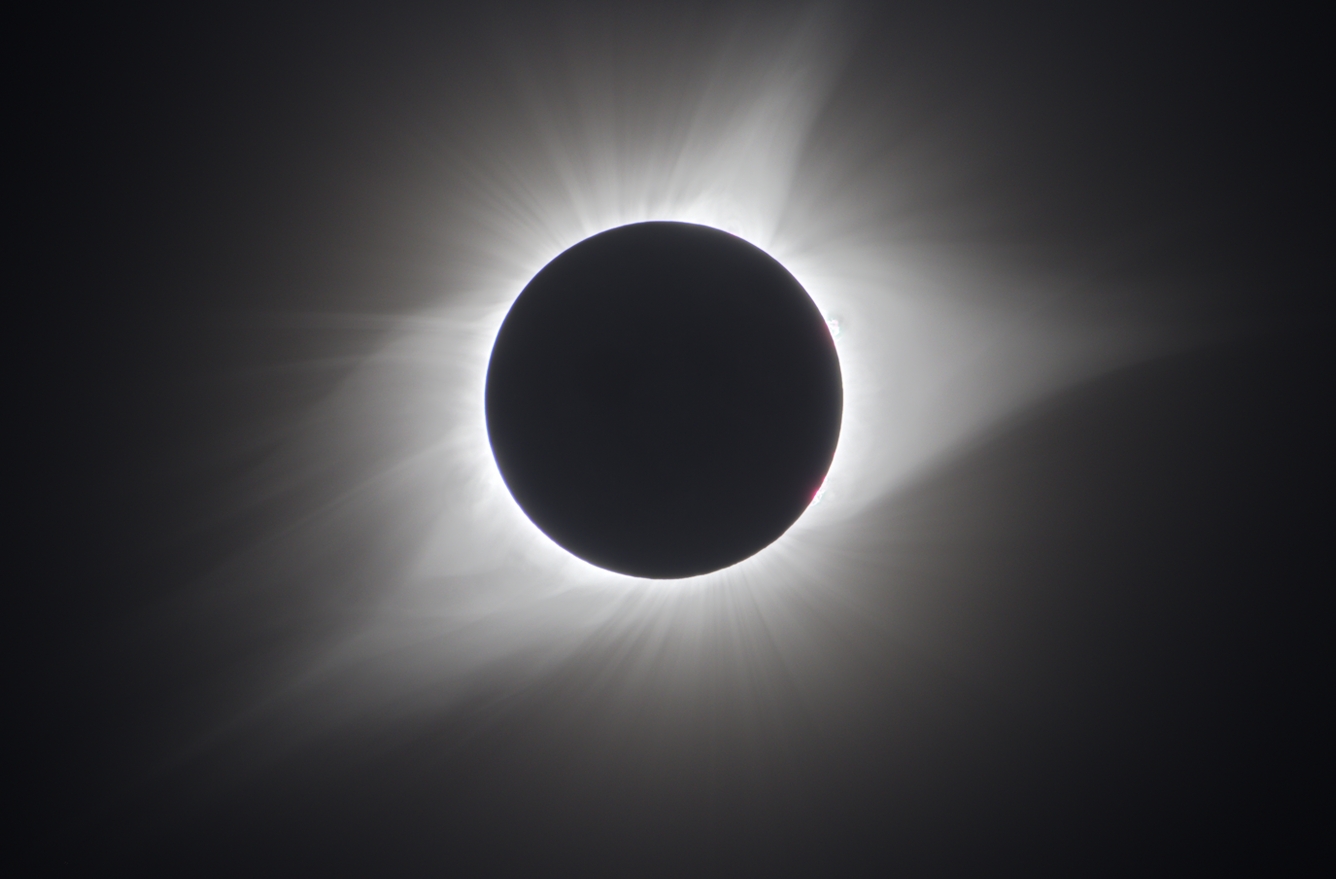August 21, 2017 Total Solar Eclipse
The August 21, 2017 Great American Eclipse was my first total solar eclipse.
It was an inspiring sight.
I had previously seen the May 1984 annular eclipse in NC that was almost total.
Phyllis and I traveled to the town of Greenwood South Carolina to see the eclipse.
The weather there turned out to be clear from start to finish, but it was hot and humid.
We found a nice motel in the path of totality
and we were able to set up our telescopes a few feet from our room.
We could take quick breaks back to our room with air conditioning to cool off.
As soon as the partial phases ended, we jumped into the pool to cool off!
To both view and photograph the eclipse, I was using my Celestron AVx equatorial mount
with my Televue Genesis 4" f/5 refractor on it.
I used a Canon T3i camera set to ISO 100 for the photos.
I loaded Magic Lantern firmware onto my camera to take sequences of the total phases
as quickly as possible while varying the shutter speed.
Eclipse Mosaic

This mosaic uses shots made before, during, and after totality.
Photoshop was used to combine 7 single shots into the one image.
A close examination of the first and last partial phase shot shows some sunspots.
Click on the image for a larger view in a new window.
Prominences

As the total phase of the eclipse was winding down, the edge of the sun was showing
some really nice red prominences.
This is a single shot at 1/500 of a second to show the inner corona and the red prominences.
Click on the image for a larger view in a new window.
Back to Mark's Astrophotography Home
Corona

This is a longer single shot of the total phase to highlight the corona.
This shot was made using a 1/60 second exposure.
To me, this looks pretty close to what I saw by eye with no optical aid.
Click on the image for a larger view in a new window.
Back to Mark's Astrophotography Home
Corona in HDR

This is another shot of the corona except it was created from several shots of
different exposure lengths all combined in Photomatix software to create a high definition
photo.
It brings out the details that cannot be seen in a single shot.
Thanks go to Steve Christensen for putting my images through his Photomatix software.
Click on the image for a larger view in a new window.
Back to Mark's Astrophotography Home